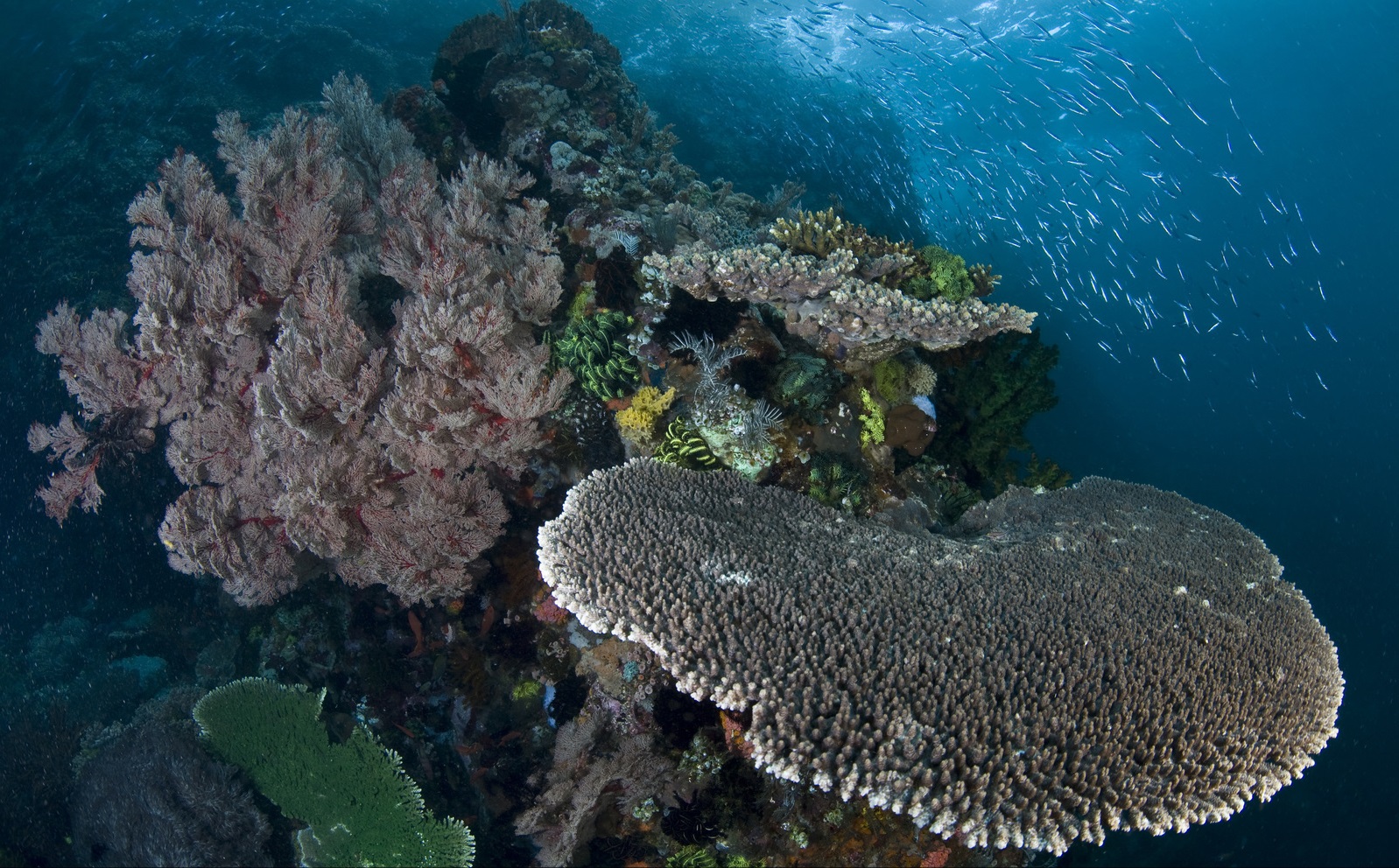Indonesia – Savu Sea
Overview
Due to its unique oceanographic features, including deep trenches, strong currents, and areas of upwelling, the Savu Sea is an important habitat and migratory corridor for cetaceans and turtles, a key nursery area for fish, and a refuge for coral reefs. However, these resources are being threatened by unsustainable and destructive fishing pressure and increasing coastal development.
In response to these threats the Indonesian Ministry of Marine Affairs and Fisheries made a decision to develop a network for two interconnected MPAs and invited TNC to participate in the design and implementation of this MPA network.
An initial assessment of the area found that certain local sea turtles and cetaceans require specific management actions, and also identified critical threats to the Savu Sea MPA. These included:
- The pervasive stress of seal level rise, heat stress, and plastic disposal
- Localized threats of fishing practices, habitat loss, sedimentation and run-off,
- Threats to sensitive species such as fisheries by-catch, noise pollution, and ship strikes
This assessment suggested that zoning, as well as specific management actions around improved fishing practices would be an effective strategy for addressing conservation stress. Specifically, the assessment recommended integrating TNC’s resilience model for coral reefs.
The next step was a series of scientific surveys which looked at biodiversity features and threats, identified enabling conditions, and priority areas and seasons for patrolling. These studies also helped to assess gillnet and longline fishing practices in Savu Sea and identify areas where high levels of entanglement incidents occur. These studies concluded with two regulatory recommendations: restricting size and type of vessels permitted in fishery management areas; and increased governmental authority over fishing lines in coastal areas.
Using the information from these surveys, a finalized plan was developed which consisted of four types of zoning: a core zone, restricted to research and education; a sustainable fisheries zone; a marine tourism zone; and an others zone, further sub-divided into areas for traditional use, cetaceans, and cultural tourism. Following consultations with stakeholder and governments at the local, regional, and national level, the Savu Sea National Marine Park was established. The result is a climate-resilient MPA network managed for the preservation of biodiversity. The core zone makes up 2.34% of the total area of the Savu Sea MPA, while the sub-cetacean zones make up 37.61% of the entire MPA. Dedicating nearly 40% of the MPA to core and sub-cetacean zones marks a bold regional commitment to protecting marine mammal corridors.
A Marine Conservation Council (DKPP) was established to foster communication and coordination between agencies and stakeholders from the national to local level, with the goal of promoting effective and equitable governance of the Savu Sea Marine National Park.
TNC Role
- Marxan
- Stakeholder engagement
- Process Facilitation
- Policy expertise
- Scientific/technical expertise
- Implementation
TNC was involved with the design and implementation of the MPA network from its inception. TNC assisted a working team formalized under East Nusa Tenggara Governor Decree to assess, design, and establish the Savu Sea MPA. That team used TNC’s 10-step Conservation Action Planning Process (CAP) to assess threats and identify management actions.
TNC then led a series of scientific surveys to collect data in support of MPA network design, and also supported the management authority and the Indonesian navy in cetacean monitoring activities. Based on the results of these efforts, TNC made policy suggestions that would be integrated into the management plan, and integrated the data into a Marxan analysis to develop a zoning design.
TNC was involved in ongoing government and stakeholder consultations which followed, including meetings with government officials in 10 districts, and the formation of P4KKP (Team for Assessment, Establishment and Management of Savu Sea National Marine Park) – a multi-stakeholder team for the preparation and establishment of the marine park. This team was recognizing by the government as a Marine Conservation Council, creating an opportunity for wider stakeholder engagement prior to park development. This team brought together over 1,000 people to discuss the development of the plan, and is thought to be Indonesia’s largest and most varied involvement of stakeholder in a natural resource decision-making process. This group has continued to establish forums and foster communications between agencies and stakeholder involved in park management. The collaborative mechanism in Savu Sea MPA shows a continuous problem-solving process, rather than a fixed state, involving extensive debates, negotiations and joint learnings within problem-solving networks.
Finally, TNC in collaboration with the DKPP and the National Agency for Marine protected areas Kupanghosted public consultations in 94 villages on Sumba, Rote and Timor Islands before TNC finalized its management plan. Following establishment of the park, TNC, in collaboration with the East Nusa Tenggara Marine Conservation Council conducted a 3 month long survey to evaluate stakeholders’ perceptions on the natural resource management in 10 districts within the MNP. TNC also partnered with local NGOs to explore the economic benefits of the MNP and to provided training in financial and project management. It resulted 4 customary practices and 7 village ordinances within 10 districts were aligned with Savu Sea MPA management (and zoning) plan. It created a model for a participatory marine conservation agreement in Lesser Sunda that benefits both people and nature.
Project Partners
Lead Institution: Indonesian Ministry of Marine Affairs and Fisheries
Other Partners: German Federal Ministry for the environment, Nature Conservation and Nuclear Safety (funder)
Project Status
The MPA network was established in 2017. The establishment of the Lesser Sunda MPA network is considered the next step in implementing Resilient MPA design.
Fact Sheets and Project Links
Contact
Glaudy Perdanahardja
Ocean Protection Senior Manager
Indonesia Program Office
Email: gperdanahardja@tnc.org
Photo credit: © Ethan Daniels

